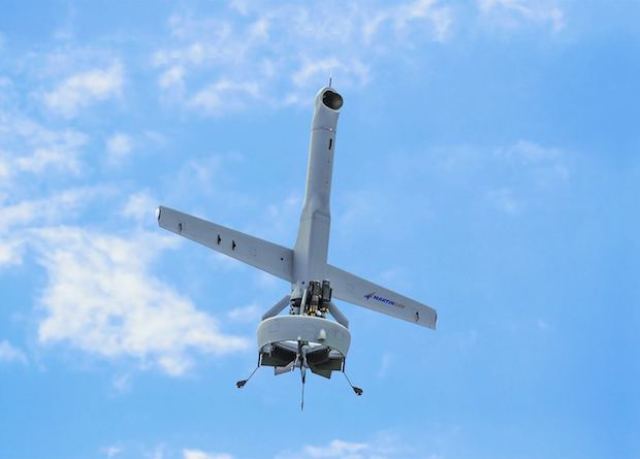The promising reconnaissance unmanned aerial vehicle V-Bat will receive a hybrid power plant on heavy fuel. According to Janes, now the company Martin UAV is engaged in its development together with the US Marine Corps.
Tailsitters are undemanding to take-off sites and are distinguished by high flight characteristics. These aircraft are able to take off vertically, fly like an airplane and land on the tail.
The unmanned tailsitter V-Bat needs 2.7 square meters for takeoff and landing. The device can reach a speed of up to 90 knots, climb to a height of 4.5 thousand meters and stay in the air for up to eight hours. The maximum payload of the V-Bat is 3.6 kilograms. The drone is controlled from a ground station via a radio channel with a range of about 80 kilometers. During the flight, V-Bat control can be delegated from one station to another.
V-Bat drones have attracted the attention of several US military departments at once. The Navy is going to use the V-Bat on almost any class of ships, and the army plans to replace the ScanEagle devices with a tailsitter. They have already started testing it. The Marine Corps, which recently began decommissioning RQ-21 Blackjack drones, is also interested in V-Bat.
A representative of the Marine Corps, William Hughes, said on August 16 that the military department is working together with Martin UAV, the developer of the aircraft, to create a hybrid heavy-fuel power plant for the V-Bat. Now the drone is equipped with a two-stroke gasoline engine, which does not meet the requirements of the Marines. A hybrid-electric engine with heavy fuel will allow the V-Bat not only to meet the criteria of the military, but also increase its power, range and the time it can spend in the air.
The Marine Corps is also interested in other drones. Earlier we wrote about the disposable GD-2000, which is being developed by Yates Corporation for Marines. They will have to carry up to 740 kilograms of cargo.
Vasilisa Chernyavtseva

